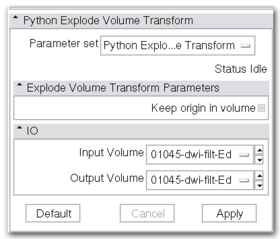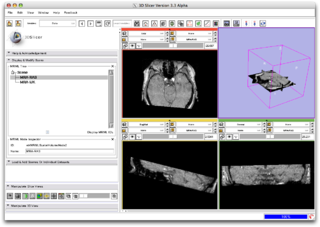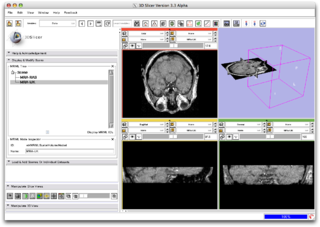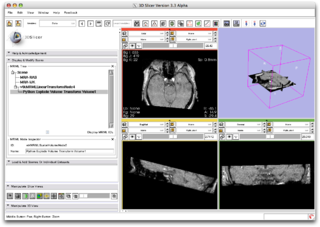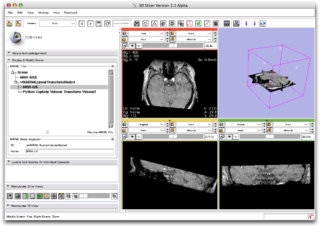Modules:PythonExplodeVolumeTransform-Documentation-3.6
From Slicer Wiki
Home < Modules:PythonExplodeVolumeTransform-Documentation-3.6
Return to Slicer 3.6 Documentation
Module Name
Python Explode Volume Transform
General Information
Module Type & Category
Type: CLI
Category: Converters
Authors, Collaborators & Contact
- Luca Antiga: Orobix Srl & Mario Negri Institute
- Daniel Blezek: Mayo Clinic
- Contact: Luca Antiga, luca.antiga@orobix.com
Module Description
This Python module takes a volume in input, extracts its IJKToRAS transform by matrix manipulation, where IJK is the local (VTK-compatible) coordinate system, and generates an IJK-oriented volume in the MRML scene as a child of a IJKToRAS transform node.
Usage
Use Cases, Examples
- The module is appropriate when a CLI module can only handle non-oriented images (i.e. images oriented as the XYZ axes), like pure-VTK modules.
- The typical use is as follows: run a volume through this filter, use the output volume as input for the non-orientation-aware CLI module and place the output of this latter module under the IJKToRAS transform generated by the present module by using the MRML tree widget.
- Use case: you have data generated from a RAS-agnostic program (e.g. fiber tracts generated in Matlab) and you want to place them in your RAS oriented scene in Slicer. What you do is then to load the MR b0 volume with orientation "From file", explode its ijkToRAS Transform, load the fiber tracts and place them under the exploded transform in the MRML tree (note that you may have to invert the transform beforehand if what you move under the transform is a polydata, as in this case). You can then (optionally) right-click on the fiber tract nodes and choose "Harden transforms" in order to have the transform applied to the fiber points. At this point you can save them in RAS.
Tutorials
NA
Quick Tour of Features and Use
|
Development
Notes from the Developer(s)
NA
Dependencies
Python
Tests
NA
Known bugs
Follow this link to the Slicer3 bug tracker.
Usability issues
Follow this link to the Slicer3 bug tracker. Please select the usability issue category when browsing or contributing.
Source code & documentation
Links to the module's source code:
Source code:
More Information
Acknowledgment
NA
References
NA
